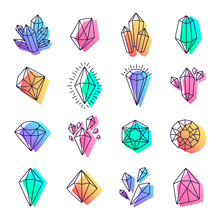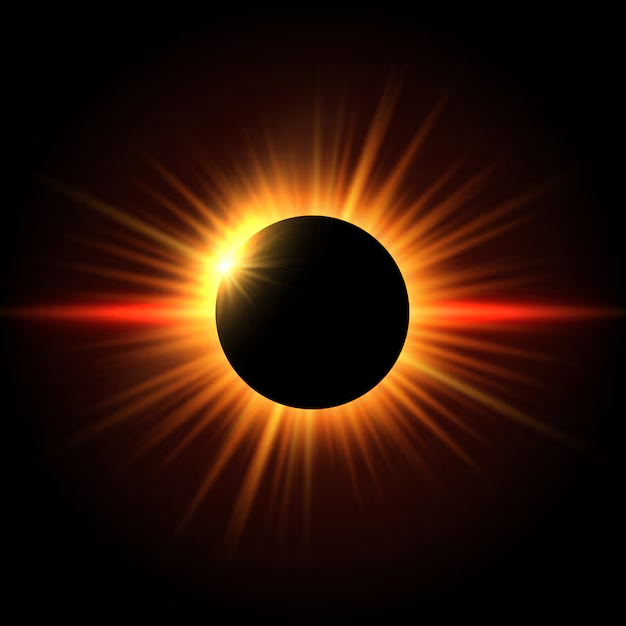Gemstones: An Excerpt From A Research Paper

May 11, 2022
“Do gems burn, I wonder? ‘Tis said they’re kin to coal,” said Terry Pratchett in his book The Color of Magic. Gemstones have been used throughout history for medicinal and adornment purposes. It wasn’t until recently that they have been used for the advancement of engineering and electronics. These fancy rocks have caught the attention of many people, including myself. Gemstones have many unique appearances, structures, and uses; but all have a specific place in this world.
They are formed when the mantle and crust underneath the surface of the earth, clash together at high pressures and temperatures. During this, some of the plates that make up the crust float down into the mantle. Rocks break free from the plates, then are taken by the liquid magma. The materials from these rocks melt, changing the chemical structure of the magma. The lower surface of the crust becomes extremely fractured, allowing magma fluids to escape into the pockets. This allows crystals to form; they have the space (pockets/cavities), ingredients (chemicals in the magma), and high temperature and pressure. With enough time, the gemstones will begin to form.
These stones can be put into two different groups, semi-precious or precious. Of all the gemstones, only four are considered to be precious stones. These four are diamonds, emeralds, rubies and sapphires. A German mineralogist by the name of Friedrich Mohs created the Mohs scale. He began by taking 10 minerals of differing hardness and testing them to see which minerals were more easily scratched (For example, talc which has a hardness of 1) and which minerals were more scratch resistant (diamonds have a hardness of 10). Contrary to what is most recognized, there are a handful of minerals which are harder than diamonds, these being wurtzite boron nitride and lonsdaleite.
Gemstones have always held special meanings to many people, including the months that they were born. These birthstones were first assigned to months in Poland. There are also three different lists of birthstones; Ancient, Traditional, and Modern. The ancient list contains gems that have been accessible for thousands of years. Stones listed on the traditional list have only had widespread availability in the past 500 years. Gemstones that have found their way onto the modern list have only had widespread access in the previous 100 years.
Many ancient peoples found value in the gems, regardless of their attachment to months. The first ever discovered piece of jewelry was from 25,000 years ago in Monaco. The necklace itself was not made of anything but fish bones. The ancient Egyptians often created jewelry of multiple rows of beads of various gemstones (green feldspar, amethyst, carnelian, and turquoise). Ancient Greek women would wear necklaces with around 75 hanging tiny vases. Of course, it was not always just jewelry that was bespeckled. Queen Elizabeth I had a special place in her heart for pearls and ordered that two thousand dresses be made, all of which were covered in dazzling pearls and other gemstones.
Besides vanity purposes, these specialized crystals played an important role in religious, spiritual, and healing practices throughout history. Ancient Egyptians always made sure to put quartz on the forehead of their dead before burying them. They believed that this would assist in leading their fallen members into the afterlife. In ancient Chinese culture, the tips of needles were covered in crystals to be used for healing purposes in acupuncture. Dragons were believed to be wise and powerful in Japanese culture, and this was reflected in crystal quartz, which was used to represent the dragon’s heart.
Gemstones also have an importance in Judeo-Christian scripture. “Our Creator, long before man, used stones such as diamonds, rubies and emeralds to adorn one of the greatest beings he could create by fiat. This being was named Lucifer (Ezekiel 28:13), who later became Satan the devil. Much later, he commanded Moses to create a special breastplate for the nation’s High Priest that contained twelve large gems that each represented one of the tribes of Israel (Exodus 28:17 – 20),” (Gemstones in the Bible!). Gemstones have been used as adornment through the Hebrew, Greek, and Aramiac scriptures.
Gemstones have been prevalent in many of our lives, whether you have even realized it or not. In your electronics, your jewelry, and your religious symbols; these stones and minerals can be found everywhere. We see them throughout history. Many of these stones have been transformed, constantly adapting with the times. They have had changes in their meanings, symbols, styles, and values. Maybe we all could learn something from their ability to adapt.
Works Cited:
“Gemstones – Everything You Need to Know about the History of Gemstones.” Mineral Exchange, 2021 Mineral Exchange, https://themineralexchange.com/pages/the-history-of-gemstones.
“Gemstones in the Bible!” Bible Study, Bible Study, https://www.biblestudy.org/bible-study-by-topic/gemstones-in-the-bible/introduction.html.
“Healing Stones 101: The Ultimate Guide + 45 Essential Crystals!” Gem Rock Auctions, https://www.gemrockauctions.com/learn/holistic-gemstone-information/healing-stones.
“How Many Precious Metals Are Found in Electronic Devices?” ERI, 2021 ERI, 23 June 2015, https://eridirect.com/blog/2015/06/how-many-precious-metals-are-found-in-electronic-devices/.
Lindberg, Sara. “What Are Chakras? Meaning, Location, and How to Unblock Them.” Healthline, Healthline Media, 24 Aug. 2020, https://www.healthline.com/health/what-are-chakras.
Wagner, Paul. “What’s My Birthstone? Birthstone Meanings & Stone Properties.” Gaia, 7 May 2020, https://www.gaia.com/article/birthstone-meanings-and-properties.
Works Consulted:
Clark, Donald. “Gem Formation: How Are Gemstones Created? – Gem Society.” International Gem Society, 2 July 2021, https://www.gemsociety.org/article/gem-formation/.
International Gem Society. “Gemstones with Health Benefits.” International Gem Society, 2021 International Gem Society LLC. , 14 Apr. 2021, https://www.gemsociety.org/article/gemstones-health-benefits/.
John. “Precious & Semi-Precious Gemstones: Explanation & Difference.” How to Find Rocks, How to Find Rocks, 19 Aug. 2021, https://howtofindrocks.com/precious-and-semi-precious-gemstones/.
King, Hobart M. “Mohs Hardness Scale.” Geology, 2005-2021 Geology.com., https://geology.com/minerals/mohs-hardness-scale.shtml.
King, Hobart M. “Ruby and Sapphire.” Geology, 2005-2021
https://geology.com/gemstones/ruby-and-sapphire/.
LeGrand, Douglas S. “Early History of Jewelry: Ancient Times to the 17th Century.” International Gem Society, 2021 International Gem Society LLC. , 15 July 2021, https://www.gemsociety.org/article/myth-magic-and-the-sorcerers-stone/.
Lucas, Stephanie. “How Ancient Cultures Used Healing Crystals and Stones.” QuantumStones.com, 3 Dec. 2018, https://quantumstones.com/ancient-cultures-used-healing-crystals-stones/.
Recendez, Cesar. “The Origin of Birthstones.” Mark Schneider Design, Mark Schneider Design, 5 July 2020, https://www.markschneiderdesign.com/blogs/jewelry-blog/the-origin-of-birthstones.
Wigington, Patti. “Using Magical Crystals & Gemstones.” Learn Religions, Learn Religions, 25 June 2019, https://www.learnreligions.com/magical-crystals-and-gemstones-2562758.















